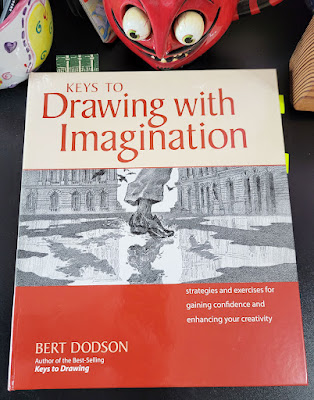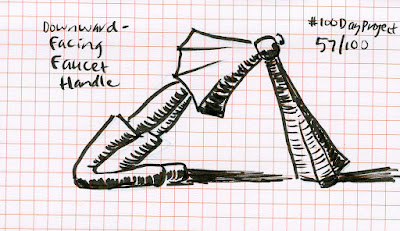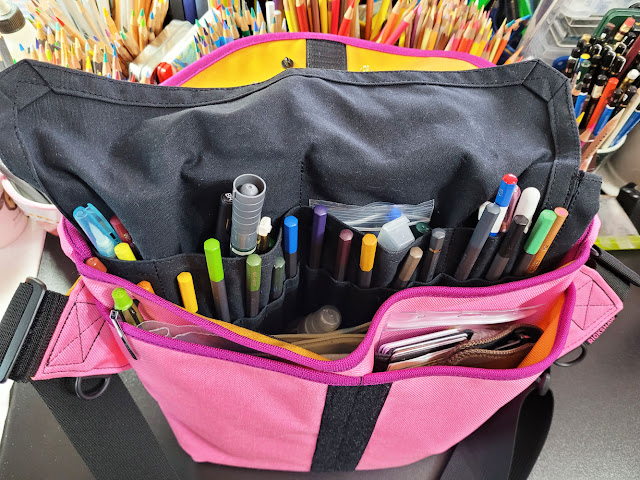 |
| At left is one of many portable perfume atomizers I've tried. It doesn't work nearly as well as the spritzer at right, which I'd been using for 5 years and needed to be replaced. |
Let’s say some painters were about to be rescued from Gilligan’s Island, but the Skipper just ordered them to make the choice between
leaving behind either their paints or their brushes. Which do you think they
would choose? I think most painters would opt to lose the paints but hang onto
their brushes. Most paints are easily replaceable, but high-quality brushes are
pricey, and most likely the painter has spent quite a bit of time, trial and
error acquiring their favorites. To replace their idiosyncratic set would be expensive
and possibly time-consuming.
As much as I talk about my beloved colored pencils and rarely mention non-consumable tools, if the Skipper presented a similar dilemma to me, I would make the choice in a heartbeat: Give up my pricey but easily replaced Caran d’Ache Museum Aquarelles and hang onto my precious water spritzer! Having the right spritzer bottle is even more important to me than the waterbrush. I’ve tried lots and lots of travel-size perfume atomizers and other refillable spritzers, and none of them puts out the fine, consistent, accurately aimed mist of the one that has become essential to my sketching practice.
I’ve been using the same spritzer bottle for five years now. Unfortunately, the nozzle has developed a leak that is getting worse, so although it still spritzes, it also creates large drips that inevitably seem to land in the most undesirable spots on my sketches. Purchased at Target, the bottle originally contained hand sanitizer from The Honest Company. When the drip first developed, I started looking all over for it, even online, but I couldn’t seem to find it. (In retrospect, I wonder if this was related to searching during the height of the COVID hand sanitizer-hoarding period.)
As the drip got worse, I searched again more recently, and this time, I easily found it! I grabbed three, including one that was in a bottle with “a new look.” (That made me suspicious, but it didn’t hurt to give it a try.) The ”new” one was not an improvement, and I’m happy that the original bottle is the same and still the best.
The moral of the story: If you find a tool you would not give up, even when the Skipper gives you a dilemma, always go back and buy three more. (And now that I know that The Honest Company’s hand sanitizer can be found easily again for a few bucks, I’m keeping my pencils and will hand the Skipper my spritzer.)

























































